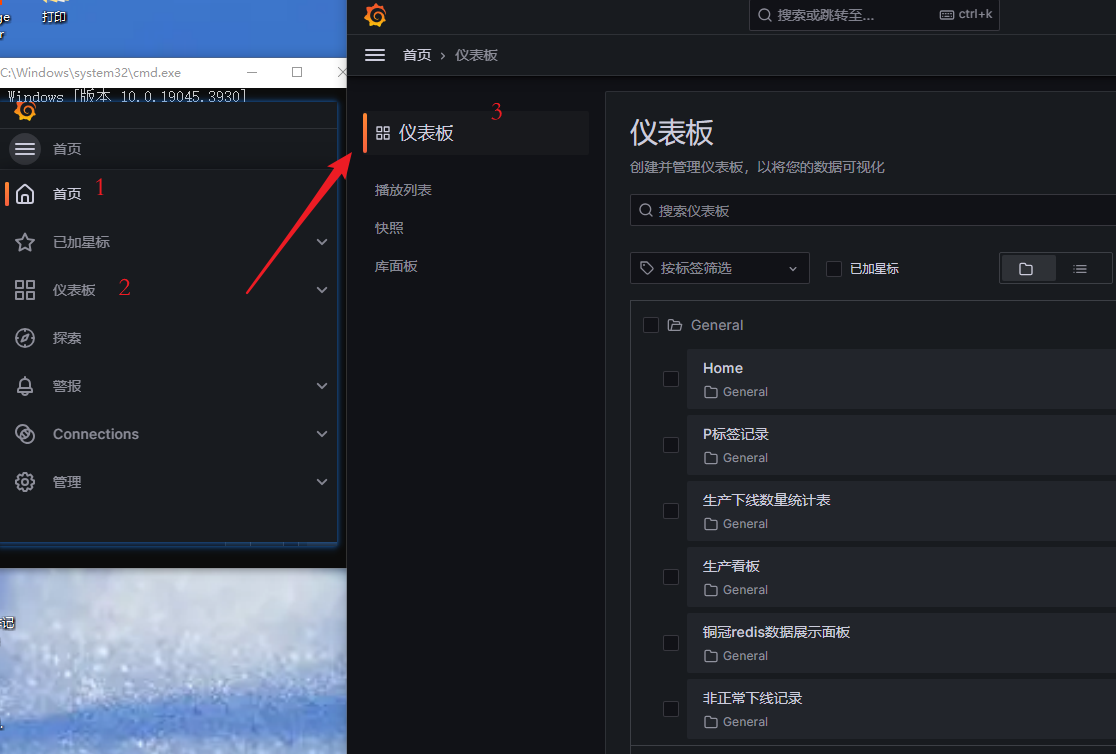二维码识别开源库-Quire码
QR码:QR码是一种高密度矩阵条形码,而quirc是一个用于从图像中提取和解码它们的库。它具有多种功能,因此非常适合此目的:1、它足够快,可以用于实时视频:在现代x86内核上,从VGA帧提取和解码大约需要50毫秒2、它具有鲁棒且宽容的识别算法。它可以正确识别和解码相机旋转和/或倾斜的QR码。它还可以区分和解码同一图像中的多个代码。3、它易于使用,并且在单个带注释的头文件中描述了一个简单的...
·
QR码:
QR码是一种高密度矩阵条形码,而quirc是一个用于从图像中提取和解码它们的库。
它具有多种功能,因此非常适合此目的:
1、它足够快,可以用于实时视频:在现代x86内核上,从VGA帧提取和解码大约需要50毫秒
2、它具有鲁棒且宽容的识别算法。它可以正确识别和解码相机旋转和/或倾斜的QR码。它还可以区分和解码同一图像中的多个代码。
3、它易于使用,并且在单个带注释的头文件中描述了一个简单的API(有关概述,请参见下文)。
4、它很小,易于嵌入,除了标准C函数外没有任何依赖关系。
5、它的内存占用非常小:每个图像像素一个字节,每个解码器对象几个kB。
6、它不使用全局可变状态,并且可以在多线程应用程序中安全使用。
7、BSD许可,几乎没有关于使用和/或修改的限制。
库的使用:
该库的所有功能都通过单个头文件公开,其中应包括:#include <quirc.h>
要解码图像,您需要实例化一个struct quirc对象,这是通过quirc_new函数完成的。以后,当您不再需要解码任何内容时,应使用以下命令释放分配的内存quirc_destroy:
struct quirc *qr;
qr = quirc_new();
if (!qr) {
perror("Failed to allocate memory");
abort();
}
/* ... */
quirc_destroy(qr);
获取解码器对象后,您需要设置将要使用的图像大小,可使用quirc_resize以下方法完成:
if (quirc_resize(qr, 640, 480) < 0) {
perror("Failed to allocate video memory");
abort();
}
quirc_resize并且quirc_new是唯一的库函数,其分配内存。如果您打算处理一系列帧(或视频流),则可能要分配单个解码器并确定其大小,并保留该解码器以处理每个帧。
处理框架分为两个阶段。第一阶段是称为识别的图像识别阶段,该阶段会拍摄灰度图像并搜索QR码。使用quirc_begin和quirc_end,您可以将灰度图像直接送入quirc用于图像处理的缓冲区中:
uint8_t *image;
int w, h;
image = quirc_begin(qr, &w, &h);
/* Fill out the image buffer here.
* image is a pointer to a w*h bytes.
* One byte per pixel, w pixels per line, h lines in the buffer.
*/
quirc_end(qr);
注意,quirc_begin仅返回指向先前分配的缓冲区的指针。缓冲区将包含未初始化的数据。呼叫至后quirc_end,解码器会保存一个可通过quirc_count和查询的QR码列表quirc_extract。
此时,处理的第二阶段发生-解码。这是通过调用来完成的,该调用quirc_decode与解码器对象无关。
int num_codes;
int i;
/* We've previously fed an image to the decoder via
* quirc_begin/quirc_end.
*/
num_codes = quirc_count(qr);
for (i = 0; i < num_codes; i++) {
struct quirc_code code;
struct quirc_data data;
quirc_decode_error_t err;
quirc_extract(qr, i, &code);
/* Decoding stage */
err = quirc_decode(&code, &data);
if (err)
printf("DECODE FAILED: %s\n", quirc_strerror(err));
else
printf("Data: %s\n", data.payload);
}
quirc_code并且quirc_data是扁平结构,使用后无需初始化或释放。
版权所有(C)2010-2012 Daniel Beer < dlbeer@gmail.com >
quirc.文件
#ifndef QUIRC_H_
#define QUIRC_H_
#include <stdint.h>
#ifdef __cplusplus
extern "C" {
#endif
struct quirc;
/* Obtain the library version string. */
const char *quirc_version(void);
/* Construct a new QR-code recognizer. This function will return NULL
* if sufficient memory could not be allocated.
*/
struct quirc *quirc_new(void);
/* Destroy a QR-code recognizer. */
void quirc_destroy(struct quirc *q);
/* Resize the QR-code recognizer. The size of an image must be
* specified before codes can be analyzed.
*
* This function returns 0 on success, or -1 if sufficient memory could
* not be allocated.
*/
int quirc_resize(struct quirc *q, int w, int h);
/* These functions are used to process images for QR-code recognition.
* quirc_begin() must first be called to obtain access to a buffer into
* which the input image should be placed. Optionally, the current
* width and height may be returned.
*
* After filling the buffer, quirc_end() should be called to process
* the image for QR-code recognition. The locations and content of each
* code may be obtained using accessor functions described below.
*/
uint8_t *quirc_begin(struct quirc *q, int *w, int *h);
void quirc_end(struct quirc *q);
/* This structure describes a location in the input image buffer. */
struct quirc_point {
int x;
int y;
};
/* This enum describes the various decoder errors which may occur. */
typedef enum {
QUIRC_SUCCESS = 0,
QUIRC_ERROR_INVALID_GRID_SIZE,
QUIRC_ERROR_INVALID_VERSION,
QUIRC_ERROR_FORMAT_ECC,
QUIRC_ERROR_DATA_ECC,
QUIRC_ERROR_UNKNOWN_DATA_TYPE,
QUIRC_ERROR_DATA_OVERFLOW,
QUIRC_ERROR_DATA_UNDERFLOW
} quirc_decode_error_t;
/* Return a string error message for an error code. */
const char *quirc_strerror(quirc_decode_error_t err);
/* Limits on the maximum size of QR-codes and their content. */
#define QUIRC_MAX_BITMAP 3917
#define QUIRC_MAX_PAYLOAD 8896
/* QR-code ECC types. */
#define QUIRC_ECC_LEVEL_M 0
#define QUIRC_ECC_LEVEL_L 1
#define QUIRC_ECC_LEVEL_H 2
#define QUIRC_ECC_LEVEL_Q 3
/* QR-code data types. */
#define QUIRC_DATA_TYPE_NUMERIC 1
#define QUIRC_DATA_TYPE_ALPHA 2
#define QUIRC_DATA_TYPE_BYTE 4
#define QUIRC_DATA_TYPE_KANJI 8
/* Common character encodings */
#define QUIRC_ECI_ISO_8859_1 1
#define QUIRC_ECI_IBM437 2
#define QUIRC_ECI_ISO_8859_2 4
#define QUIRC_ECI_ISO_8859_3 5
#define QUIRC_ECI_ISO_8859_4 6
#define QUIRC_ECI_ISO_8859_5 7
#define QUIRC_ECI_ISO_8859_6 8
#define QUIRC_ECI_ISO_8859_7 9
#define QUIRC_ECI_ISO_8859_8 10
#define QUIRC_ECI_ISO_8859_9 11
#define QUIRC_ECI_WINDOWS_874 13
#define QUIRC_ECI_ISO_8859_13 15
#define QUIRC_ECI_ISO_8859_15 17
#define QUIRC_ECI_SHIFT_JIS 20
#define QUIRC_ECI_UTF_8 26
/* This structure is used to return information about detected QR codes
* in the input image.
*/
struct quirc_code {
/* The four corners of the QR-code, from top left, clockwise */
struct quirc_point corners[4];
/* The number of cells across in the QR-code. The cell bitmap
* is a bitmask giving the actual values of cells. If the cell
* at (x, y) is black, then the following bit is set:
*
* cell_bitmap[i >> 3] & (1 << (i & 7))
*
* where i = (y * size) + x.
*/
int size;
uint8_t cell_bitmap[QUIRC_MAX_BITMAP];
};
/* This structure holds the decoded QR-code data */
struct quirc_data {
/* Various parameters of the QR-code. These can mostly be
* ignored if you only care about the data.
*/
int version;
int ecc_level;
int mask;
/* This field is the highest-valued data type found in the QR
* code.
*/
int data_type;
/* Data payload. For the Kanji datatype, payload is encoded as
* Shift-JIS. For all other datatypes, payload is ASCII text.
*/
uint8_t payload[QUIRC_MAX_PAYLOAD];
int payload_len;
/* ECI assignment number */
uint32_t eci;
};
/* Return the number of QR-codes identified in the last processed
* image.
* */
* int quirc_count(const struct quirc *q);
* /* Extract the QR-code specified by the given index. */
* void quirc_extract(const struct quirc *q, int index,
struct quirc_code *code);
/* Decode a QR-code, returning the payload data. */
quirc_decode_error_t quirc_decode(const struct quirc_code *code,
struct quirc_data *data);
#ifdef __cplusplus
}
#endif
#endif
quirc.c文件
#include <stdlib.h>
#include <string.h>
#include "quirc_internal.h"
const char *quirc_version(void)
{
return "1.0";
}
struct quirc *quirc_new(void)
{
struct quirc *q = malloc(sizeof(*q));
if (!q)
return NULL;
memset(q, 0, sizeof(*q));
return q;
}
void quirc_destroy(struct quirc *q)
{
free(q->image);
/* q->pixels may alias q->image when their type representation is of the
same size, so we need to be careful here to avoid a double free */
if (!QUIRC_PIXEL_ALIAS_IMAGE)
free(q->pixels);
free(q);
}
int quirc_resize(struct quirc *q, int w, int h)
{
uint8_t *image = NULL;
quirc_pixel_t *pixels = NULL;
/*
* XXX: w and h should be size_t (or at least unsigned) as negatives
* values would not make much sense. The downside is that it would break
* both the API and ABI. Thus, at the moment, let's just do a sanity
* check.
*/
if (w < 0 || h < 0)
goto fail;
/*
* alloc a new buffer for q->image. We avoid realloc(3) because we want
* on failure to be leave `q` in a consistant, unmodified state.
*/
image = calloc(w, h);
if (!image)
goto fail;
/* compute the "old" (i.e. currently allocated) and the "new"
(i.e. requested) image dimensions */
size_t olddim = q->w * q->h;
size_t newdim = w * h;
size_t min = (olddim < newdim ? olddim : newdim);
/*
* copy the data into the new buffer, avoiding (a) to read beyond the
* old buffer when the new size is greater and (b) to write beyond the
* new buffer when the new size is smaller, hence the min computation.
*/
(void)memcpy(image, q->image, min);
/* alloc a new buffer for q->pixels if needed */
if (!QUIRC_PIXEL_ALIAS_IMAGE) {
pixels = calloc(newdim, sizeof(quirc_pixel_t));
if (!pixels)
goto fail;
}
/* alloc succeeded, update `q` with the new size and buffers */
q->w = w;
q->h = h;
free(q->image);
q->image = image;
if (!QUIRC_PIXEL_ALIAS_IMAGE) {
free(q->pixels);
q->pixels = pixels;
}
return 0;
/* NOTREACHED */
fail:
free(image);
free(pixels);
return -1;
}
int quirc_count(const struct quirc *q)
{
return q->num_grids;
}
static const char *const error_table[] = {
[QUIRC_SUCCESS] = "Success",
[QUIRC_ERROR_INVALID_GRID_SIZE] = "Invalid grid size",
[QUIRC_ERROR_INVALID_VERSION] = "Invalid version",
[QUIRC_ERROR_FORMAT_ECC] = "Format data ECC failure",
[QUIRC_ERROR_DATA_ECC] = "ECC failure",
[QUIRC_ERROR_UNKNOWN_DATA_TYPE] = "Unknown data type",
[QUIRC_ERROR_DATA_OVERFLOW] = "Data overflow",
[QUIRC_ERROR_DATA_UNDERFLOW] = "Data underflow"
};
const char *quirc_strerror(quirc_decode_error_t err)
{
if (err >= 0 && err < sizeof(error_table) / sizeof(error_table[0]))
return error_table[err];
return "Unknown error";
}
更多推荐
 已为社区贡献2条内容
已为社区贡献2条内容








所有评论(0)